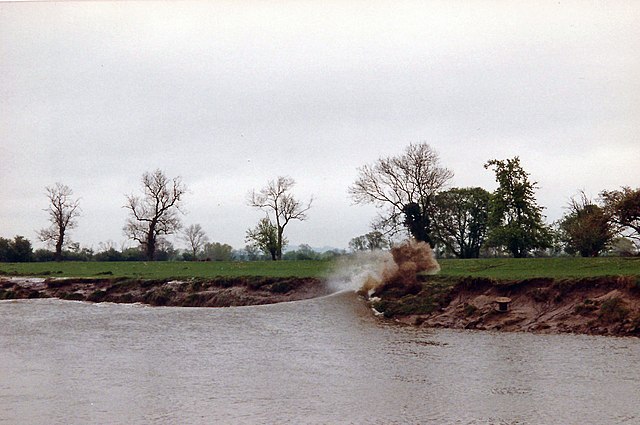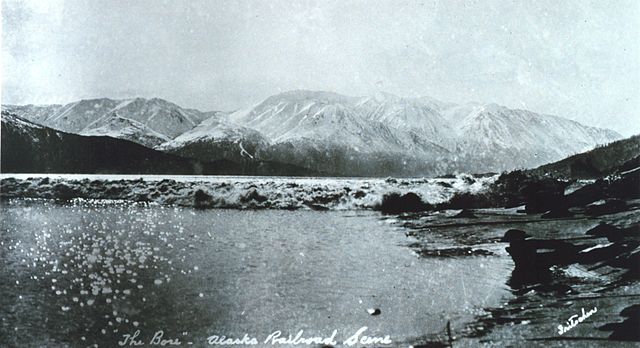The Severn bore is a tidal bore seen on the tidal reaches of the River Severn in south western England. It is formed when the rising tide moves into the funnel-shaped Bristol Channel and Severn Estuary and the surging water forces its way upstream in a series of waves, as far as Gloucester and beyond. The bore behaves differently in different stretches of the river; in the lower, wider parts it is more noticeable in the deep channels as a slight roller, while the water creeps across the sand and mudflats. In the narrower, upper reaches, the river occupies the whole area between its banks and the bore advances in a series of waves that move upstream. Near Gloucester, the advancing water overcomes two weirs, and sometimes one in Tewkesbury, before finally petering out.
Bore hitting the riverbank in 1994
The Severn bore near Over Bridge
This bore, near the Severn Bore Inn, was smaller than predicted.
Surfers riding the Severn bore
A tidal bore, often simply given as bore in context, is a tidal phenomenon in which the leading edge of the incoming tide forms a wave of water that travels up a river or narrow bay, reversing the direction of the river or bay's current. It is a strong tide that pushes up the river, against the current.
A bore in Morecambe Bay, in the United Kingdom
The tidal bore in Upper Cook Inlet, in Alaska
Undular bore and whelps near the mouth of Araguari River in northeastern Brazil. The view is oblique towards the mouth from airplane at approximately 30 m (100 ft) altitude.
The Trent Aegir seen from West Stockwith, Nottinghamshire, 20 September 2005








